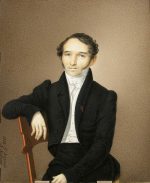
The Geological Museum's history started in 1805 when it was founded at the Department of Physics and Mathematics Kazan Imperial University as the Natural History Cabinet.
 The first manager of the Cabinet was Professor Karl Fuchs.
The first manager of the Cabinet was Professor Karl Fuchs.


The collection grew quickly, and the Mineralogy Cabinet was created in 1824 – 1825 and then served as the base for the Department of Mineralogy.
Professor A. Kupfer played a major role in this by creating the first catalog of specimens in 1826.

 The Department of Geognosis and Paleontology was established in 1863. The Mineralogy Cabinet, then managed by Professor F. Rosen, was divided into two parts – mineralogical and geological.
The Department of Geognosis and Paleontology was established in 1863. The Mineralogy Cabinet, then managed by Professor F. Rosen, was divided into two parts – mineralogical and geological.

 The Department of Geognosis of Paleontology and the Geological Cabinet was first headed by a prominent Russian geologist N. Golovkinsky.
The Department of Geognosis of Paleontology and the Geological Cabinet was first headed by a prominent Russian geologist N. Golovkinsky.
The Cabinet’s collection consisted of rock formations and earth materials.

 In 1872 Alexander Shtukenberg became the Chair of both the Department and the Geological Cabinet
In 1872 Alexander Shtukenberg became the Chair of both the Department and the Geological Cabinet
He and his students were actively engaged in creating a geological map of Russia. This year was the start of purposeful collecting of geological samples by Kazan University and the University’s Natural Sciences Society.

During the Revolution and the Civil War (1918 - 1920) the Museum’s collections were saved by Professor Mikhail Novinsky who then lived in the Geological Cabinet permanently.
In 1929 the Mineralogical Cabinet and the Geological Cabinet were transferred from the Old Clinic to 4 Kremlevskaya Street, the building where they are situated today.

The Geological Museum and the building were renovated in the 1990s. The Museum was renamed after Professor Shtukenberg on May 10, 2003.

The Museum now occupies two floors and halls and exhibitions dedicated to Mineralogy, Crystallography, Geodynamics, Historical Geology, Quaternary Fauna, Geology of Petroleum and Gas, Russian Geology, History of Geology in Kazan, and Human Evolution.
